Indoor grapes - a stately home vine
Indoor grapes are perhaps the best solution for landscaping premises. If residents love clean air and home-made vines that wrap walls and ceilings, then such a plant will become their favorite. Indoor grapes are able to twist and refine the vertical surface intended for it in a couple of years - walls, indoor trellises, furniture, jambs, windows and other interior items.
Its bright green foliage, covered with fluffy brown hairs, attracts attention, soothes and cheers up the owners. You get the impression that you are in the forest. Indoor grapes perfectly purify the air and give it a tart aroma. For those who want to grow this wonderful plant, this short body of knowledge is intended, where you will learn about the types of grapes, growing conditions, rules of care and breeding... Useful information will help you grow thick and juicy lianas that wind around the walls - a piece of real jungle at home.
Content
- Indoor grapes: structural features
- Types of indoor grapes
- Growing conditions
- Reproduction methods
- Proper plant care
- Transfer
- Diseases and pests
Indoor grapes: structural features
Indoor grapes are perennials, evergreens with climbing vines. It grows quite quickly, vines cling to vertical objects with the help of antennae. The leaves have a variety of shapes, depending on the species and variety - whole, ternary. Most often they have a jagged shape and resemble wild grapes. The plant does not bloom under indoor conditions, but sometimes this happens. Flowers are very small and inconspicuous inflorescences.
Indoor grapes are grown not for their flowering, but for their ability to cover large areas of rooms and purify the air in a short time.
The stems and shoots of the plant are rather fragile, therefore, flower growers recommend determining a place that is unique for it, so that in the future you do not have to transfer grape to another part of the house. Unpretentious and able to grow in any conditions. Indoor grapes are often grown in public facilities for this very reason.
The homeland of this amazing plant is America, Asia and Australia, their subtropical and tropical forests. Despite its unpretentiousness, it prefers quiet places where there are no winds, moderately humid and illuminated by diffused sunlight. It is customary to maintain the same conditions when growing it at home. Indoor grapes have a large number of species and varieties, but only a few are grown in the conditions of apartments and premises.
Types of indoor grapes
The most common and widely used is cissus. Less often they resort to growing tetrastigma, since the vines are quite heavy and are better suited for growing in a garden or greenhouses. Cissus, in turn, is subdivided into several subspecies.
They can be found in apartments, offices, houses and winter gardens. Allocate:
- Cissus antarctic - often used for landscaping public institutions, schools, offices, meeting rooms.Unpretentious and not afraid of temperature changes.
- Rhombic cissus - it is this species that is widespread in home floriculture. Fluffy and dense greenery can mask supports and trellises, walls and other objects that support it. The leaves are diamond-shaped, small and neat. Vines can reach a length of 1.5 meters.
- Two-colored cissus - this plant is considered the most capricious among its fellows. It requires special growing conditions and maintenance. Therefore, flower growers rarely grow it. It differs from others in the color of the leaves - dark green with a silver pattern, maroon below.
- The quadrangular is a very unusual plant due to the shape of the leaves. Rarely grown in rooms.
Many grape lovers, without fear, take up the cultivation of tetrastigma. This view is certainly very effective, but it needs to be provided with a lot of space and a reliable, solid support. If the house is large, huge areas, in this case, this type of indoor grape can also be cultivated.
Growing conditions
The air temperature for almost all types of indoor grapes should be 22 ° -25 °, not higher. In winter, the temperature can be reduced to 18 ° -20 °. As long as the bush is small and has not completely attached to the vertical support, it can be taken out into the fresh air in summer. Temperature drops are undesirable for cissus, especially for a two-colored species. Try to avoid this.
When choosing a place for grapes, choose rooms in the east and west direction, where there are no drafts.
Indoor grapes love bright, but diffused lighting. It is better not to place it near the windows. Choose niches for it in the walls or places where sunlight will fall, but not direct sunlight. The plant is shade-loving, but dark places, without any light, are undesirable.
The increased dryness of the air is not suitable for indoor grapes. He will die very quickly. Prefers moderately humid places, but not damp. It is necessary to constantly monitor the moisture content of the soil and prevent the earthen coma from drying out. The optimal composition of the soil will be a mixture of leafy soil, peat, humus, turf and sand. The ratio is 1: 1: 1: 1: 1. Moderate humidity, bright and diffused light, optimal temperature - will be the key to the lush and beautiful growth of outlandish vines.
Reproduction methods
It is very easy to propagate cissus. To do this, use the method cuttings:
- From an adult, preferably two years old, the plants are cut off the apical shoots. They must have at least two kidneys.
- Cut cuttings are placed in water and are waiting for the roots to appear.
- A glass of water can be avoided by immediately rooting the stalk into a light substrate.
- Once roots are established, plant the plant in a permanent pot. Florists recommend planting several cuttings in one flowerpot.
- The substrate for young plants is prepared by mixing leafy, soddy soil with peat, humus and sand, one part of each. The soil should be slightly damp.
- Desired temperature for germination cuttings is 22 ° -23 °. Be careful with drafts. They shouldn't be.
This simple propagation method will allow the grower to very quickly breed the crop and plant it in different containers.
Proper plant care
It is very easy to care for indoor grapes, but the lack of elementary watering and feeding will lead to the death of the plant. During the period of active growth, spring-summer, the grapes are watered abundantly, but not excessively. Overflow will cause root rot. Use the good old way to test soil for moisture - your finger. If soil sticks to it, then watering is not necessary. If the fingertip is almost dry and the ground does not adhere well, you need watering... Thus, the plant will not be waterlogged.
Do not let the earth dry out.
Given the rapid growth and development of indoor grapes, it should be constantly fed fertilizer for non-flowering plants.Produce top dressing once every two weeks. In the spring, preference is given to nitrogen fertilizers, in the fall - to potassium-phosphorus fertilizers. In winter, fertilization is stopped, watering will no longer be abundant, but moderate.
As the bush grows, young shoots pinch and do pruning whole plant:
- This is done so that the grapes stretch not only up, but also to the sides. So the bush will acquire a lush and voluminous shape. FROM
- trimming the plant is desirable in spring, cissus tolerates pruning well.
- When forming a bush, be careful with the shoots, they are very fragile and can easily break.
Another important point is the sprinkling process. It is held not often - once every six months. This is done rather for hygienic reasons. Indoor grapes perfectly clean the air and for this reason, the surface of the leaves becomes very dirty, acquires a grayish bloom - dust. Therefore, you need to wash it. Compliance with simple rules of care will help to avoid the appearance of diseases and pests, the grapes will always be bright and juicy, strong and healthy.
Transfer
Indoor grapes grow very quickly. This becomes the reason for his annual transplants... It is produced in early spring. The plant is transplanted into a larger pot and the old soil is replaced with fresh soil. The soil will include sheet soil, turf, peat, humus and sand. The ratio of the parts is the same - one part of each component.
After transplanting, the plant is pruned.
All upper shoots are shortened. This will help the grapes to start growing faster and form side shoots, which is important for bushiness. For 4-5 years, the plant is transplanted every year. After that, you can carry out a transplant once every two years. It is always held in the spring.
Once the grapes are transplanted, add fertilizercontaining nitrogen compounds. This will help the plant quickly adapt to the new pot and get used to the fresh substrate. The transplant is another important care condition. Without it, the plant will die very quickly.
Diseases and pests
If all the conditions for growing and care are met, then indoor grapes will not undergo diseases or pests. However, very often the plant is transfused. As a result, root rot appears, the grapes shed their foliage. In this case, you must stop watering.
The best option would be to transplant a plant. If brown spots appear on the leaves, it means that there was either a temperature difference, or a draft, or dryness of the air and soil. That is, all the problems that arise when growing grapes are due to improper care. A scabbard may appear on the plant - the scourge of indoor grapes. It strikes him when the room is hot and dry. You can get rid of the scabbard with the help of insecticides, diluted twice as much as indicated in the instructions. The grapes do not tolerate chemicals well, the leaves can be easily burned.
In order to avoid all these troubles, take care of the care and conditions of detention more responsibly.
In this case, you will not have to deal with the already appeared pests and diseases. Indoor grapes are easy to grow, especially when it comes to a species such as cissus. He is unpretentious and, subject to all conditions and rules, will not cause any trouble. Thick, curly and luxurious liana will ennoble the room, turn it into a piece of tropical forest with crystal clear air!
More information can be found in the video.




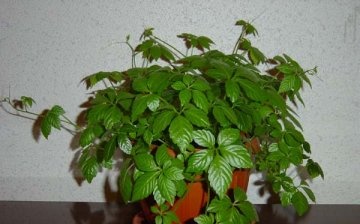

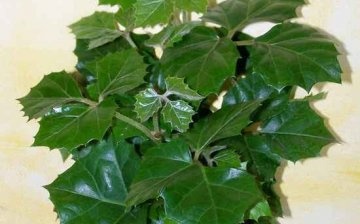
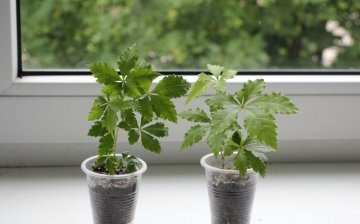
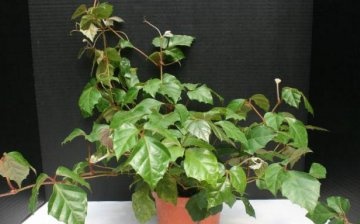
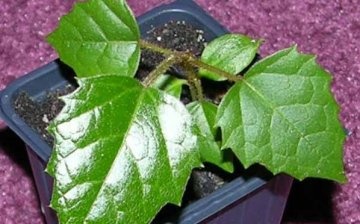









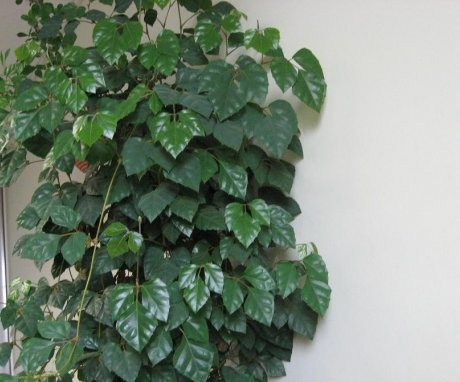
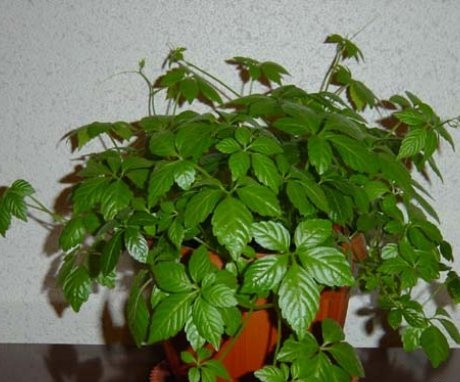
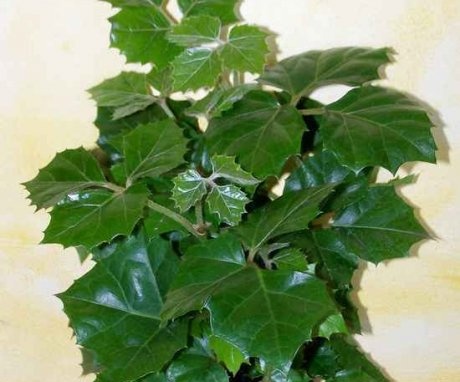
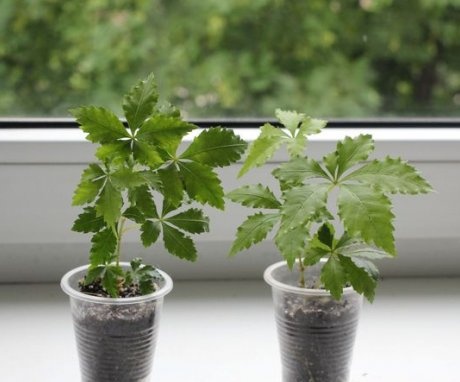
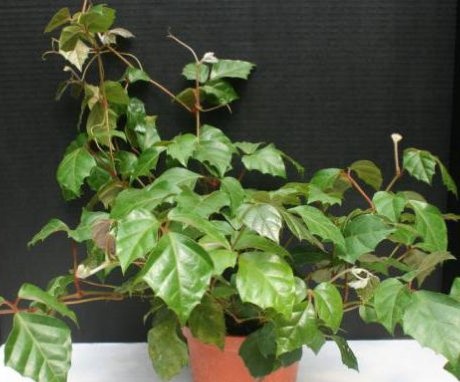
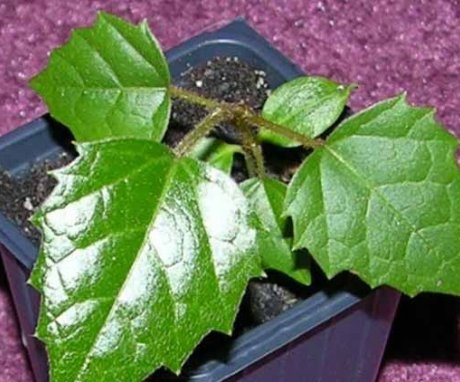
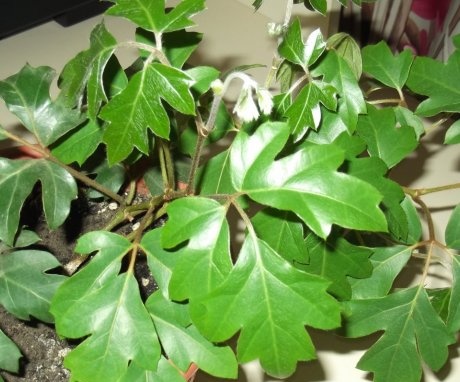
I have already experimented with indoor grapes many times, in my opinion this plant does not like to be indoors, although I keep it in the summer on an open balcony. It gets sick too often and gradually dries up completely, even with careful care.